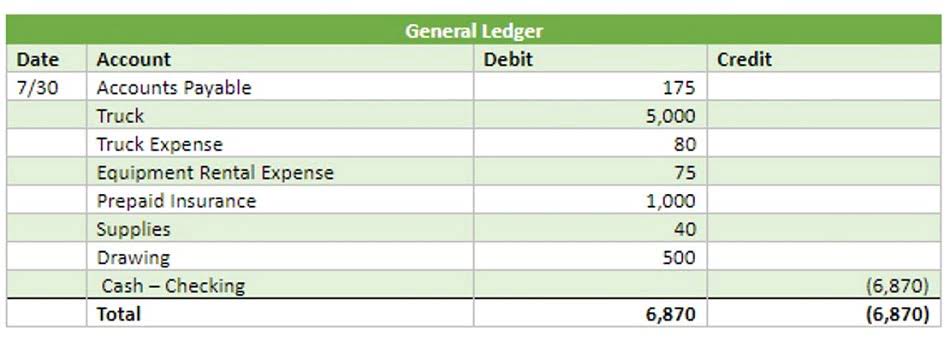
This comprehensive guide breaks down overhead rate calculation into clear, actionable steps Online Bookkeeping any business can follow. If you have multiple departments with very different overhead structures, a single predetermined rate can cause serious distortions. Whichever tool you choose, remember that effective overhead management is an ongoing process.

Leveraging Accounting Software for Overhead Management
- After going to its terms and conditions of the bidding, it stated the bid would be based on the overhead rate percentage.
- In a company, the management wants to calculate the predetermined overhead to set aside some amount for the allocation of a cost unit.
- It is often difficult to assess precisely the amount of overhead costs that should be attributed to each production process.
- By grouping related costs together, businesses can apply a single overhead rate to allocate costs more efficiently.
- This is because using this rate allows them to avoid compiling actual overhead costs as part of their closing process.
It’s a completely estimated amount that changes with the change in the level of activity. However, the problem with absorption/traditional costing is that we have to ignore individual absorption bases and absorb all overheads using a single level of activity. Hence, this is a compromise on the accuracy of the overall allocation process. On the other hand, the ABC system is more complex and requires extensive administrative work. Allocating overhead costs uses predetermined overhead rate the same calculation as the overhead rate, with the results used differently. If the actual overhead at the end of the accounting period is 1,575 the overhead is said to be under applied by 75 (1,500 – 1,575) as shown in the table below.
Calculate Applied Overhead: A Step-by-Step Guide
It is typically established at the beginning of an accounting period and is based on projected costs and activity levels. This rate helps businesses assign indirect costs efficiently rather than waiting for actual data at the end of a period. The plant-wide rate method allocates overhead costs to all production departments based on a single predetermined overhead rate. This rate is calculated by dividing the total estimated overhead costs for the period by the total estimated activity base for all production departments combined. The single overhead rate method is a simplified approach that uses a single predetermined overhead rate for all overhead costs. This is done by dividing the total estimated overhead costs by the total estimated direct labor hours or machine hours.

Activity-Based Costing (ABC)

If you can easily track the cost to a specific product, it’s likely a direct cost. Accurate overhead allocation directly impacts several crucial business functions. Accountants measure the differences between actual and applied overhead at the end of each period. This helps in assessing the accuracy of overhead allocations and making necessary adjustments. Every accounting period, a standard amount of overhead is estimated and applied to goods that have been produced.

At the end of the accounting period the applied overhead is compared to the actual overhead and any difference is posted to the cost of goods sold or, if significant, to work in process. The allocation of overhead to the cost of the product is also recognized in a systematic and rational manner. The overhead is then applied to the cost of the product from the manufacturing overhead account. The overhead used in the allocation is an estimate due to the timing considerations already discussed. These rates help businesses estimate future overhead costs and create realistic budgets and financial forecasts. For long-term contracts or projects, the percentage of completion method allocates overhead costs based on the project’s progress.
The Importance of Accurate Overhead Rate Calculation
This is done by determining the number of hours the machine was used over the last quarter. We what are retained earnings saved more than $1 million on our spend in the first year and just recently identified an opportunity to save about $10,000 every month on recurring expenses with PLANERGY. GoCardless is a global payments solution that helps you automate payment collection, cutting down on the amount of financial admin your team needs to deal with.
- Indirect costs are those that cannot be easily traced back to a specific product or service.
- While ABC can be more complex to implement than traditional costing methods, the insights it provides can be invaluable for making informed business decisions.
- This means that since the project would involve more overheads, the company with the lower overhead rate shall be awarded the auction winner.
- Larger organizations may employ a different predetermined overhead rate in each production department, which tends to improve the accuracy of overhead application by employing a higher level of precision.
- If you’d like to learn more about calculating rates, check out our in-depth interview with Madison Boehm.
- Company X and Company Y are competing to acquire a massive order as that will make them much recognized in the market, and also, the project is lucrative for both of them.
If the management does not consider the cost of the product when setting its price, then the price of the product may end up being too unrealistic. However, if the business sets the price of the same product as $1, without considering its cost, then the business will make huge losses on the product. Most businesses recalculate their rate annually as part of their budgeting process.
The business owner can then add the predetermined overhead costs to the cost of goods sold to arrive at a final price for the candles. Here’s how a service-based business, namely a marketing agency, might go about calculating its predetermined overhead rate. Once you have a handle on your estimated overhead costs, you can plug these numbers into the formula.

Choosing the appropriate method depends on the materiality of the over- or underapplied overhead. Regularly review and update the calculator to ensure it remains accurate and reflects changes in the business. Use the calculator to analyze different scenarios and make informed decisions about pricing, budgeting, and resource allocation. Implementation of ABC requires identification and record maintenance for various overheads. This record maintenance and cost monitoring is expected to increase the administrative cost.

